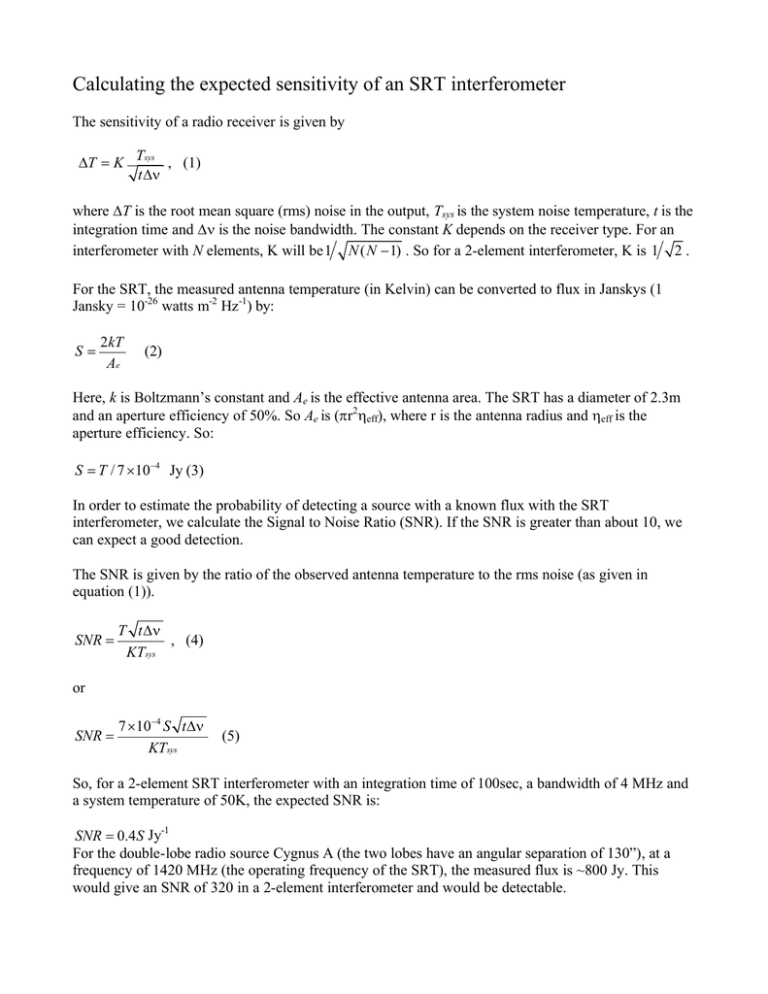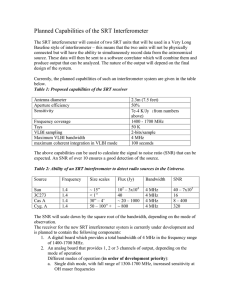Calculating the expected sensitivity of an SRT interferometer
advertisement

Calculating the expected sensitivity of an SRT interferometer The sensitivity of a radio receiver is given by ∆T = K Tsys , (1) t ∆ν where ∆T is the root mean square (rms) noise in the output, Tsys is the system noise temperature, t is the integration time and ∆ν is the noise bandwidth. The constant K depends on the receiver type. For an interferometer with N elements, K will be 1 N ( N − 1) . So for a 2-element interferometer, K is 1 2 . For the SRT, the measured antenna temperature (in Kelvin) can be converted to flux in Janskys (1 Jansky = 10-26 watts m-2 Hz-1) by: S= 2kT Ae (2) Here, k is Boltzmann’s constant and Ae is the effective antenna area. The SRT has a diameter of 2.3m and an aperture efficiency of 50%. So Ae is (πr2ηeff), where r is the antenna radius and ηeff is the aperture efficiency. So: S = T / 7 ×10−4 Jy (3) In order to estimate the probability of detecting a source with a known flux with the SRT interferometer, we calculate the Signal to Noise Ratio (SNR). If the SNR is greater than about 10, we can expect a good detection. The SNR is given by the ratio of the observed antenna temperature to the rms noise (as given in equation (1)). SNR = T t ∆ν , (4) KTsys or SNR = 7 × 10−4 S t ∆ν KTsys (5) So, for a 2-element SRT interferometer with an integration time of 100sec, a bandwidth of 4 MHz and a system temperature of 50K, the expected SNR is: SNR = 0.4S Jy-1 For the double-lobe radio source Cygnus A (the two lobes have an angular separation of 130”), at a frequency of 1420 MHz (the operating frequency of the SRT), the measured flux is ~800 Jy. This would give an SNR of 320 in a 2-element interferometer and would be detectable.




